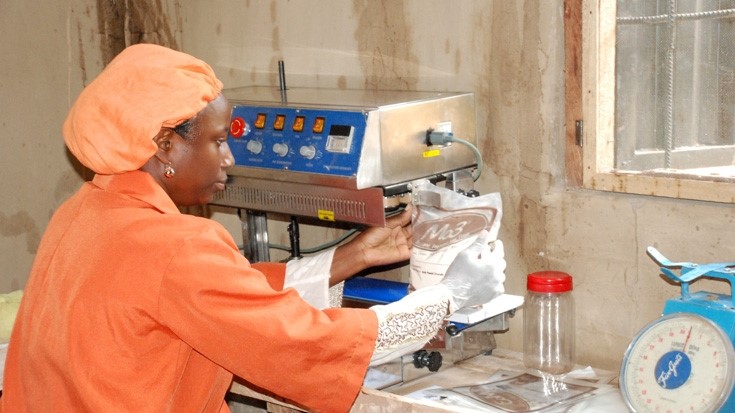In recent times, the emergence of female-owned small businesses around the world have exceeded its record of the past, this is largely dependent on the fact that each day, women develop unique ideas and business strategies towards improving their lives and participating in the global economic development.
Research has shown that female-owned small and medium-sized enterprises (SMEs) make up to 30 percent to 37 percent of all SMEs (8 million to 10 million women-owned firms) in the emerging markets. This result does not exclude the rural women in developing countries.
However, these women and their businesses are faced with a general challenge which has to do with finance.
Due to several issues ranging from collateral, trust, and so on, women entrepreneurs face difficulties in obtaining bank credit compared to men. This limitation has crippled the general access to finance majorly for the women entrepreneurs in rural areas.
In India, several financial institutions have initiated new measures to expand the access to finance to micro, small and medium enterprises (MSMEs), yet women-owned MSMEs continue to suffer complications.
Although there are other varying challenges, the bulk of the problem rest solely on the access to finance. Gaining access to adequate credit for business expansion remains a huge barrier to most female entrepreneurs.
THE CHALLENGES
- Collateral
The issue of collateral is the first and major problem that the women are often faced with. This explains why many rural women never make the move of approaching the banks for loans. Most developing countries are patriarchal oriented and their culture is strictly favorable to the men. Collaterals such as lands and other assets are not accessible to the women but for the male folk, assets are passed down to them through inheritance (by their fathers).
- Limited Awareness and Illiteracy
Most of these women are unlearned and do not know how to go about it. This category of women constitute widows who have access to lands and other properties passed down to them by their late husbands or female children from royal clans. But lack adequate information and understanding of the formal financial sector’s products and services limits their access.
- The Hostile Methods
While others face the issue of collateral and education, a large number of the women find the process too complicated. This is because, most banks employ more men than women, and most female employees are assigned desk jobs. The communication becomes deterred and as a result, financial institutions miss the opportunity to rapport with and fully understand women entrepreneurs. On the other hand, the women, based on the lack of negotiation, they fail to familiarize with the complex processes of the banking and financial systems and then they end up quitting concluding that they will never get the loan.
- Lack of Trust
The banking sectors displace trust for the women-owned enterprise and do not encourage the women to hang on through the complex processes posed at them during the period of loan acquisition. This is very discouraging for the women as it frustrates their plans and weakens their decision. Banker’s perception about women-led enterprises is that it is risky because they are usually smaller businesses with limited/no collateral.
SOLUTION
It is important for women to have access to adequate funding in all developing countries as it is an obvious fact that this move will push for development in both global and individual economies. This, therefore, calls for the involvement of stakeholders, government, and non-governmental organizations, private sector organizations in addressing the constraints women are faced with.
Creating unique packages tailored to suit different kinds of businesses, and reducing requirements for obtaining loans for small and medium-scale businesses will help solve this issue with an overall goal to improve the lives of women around the world and bridge gender gap. The banking sector needs to make some important adjustment to their systems in order to accommodate these women.
Why is this important? Evaluating the significant contributions of female entrepreneurs in developed countries like the United States in the space of three decades, the growth of women-owned firms have exceeded and doubled the rate of all other firms (23 percent and 9 percent respectively).
Research has shown that they contribute nearly $3 trillion to the U.S. economy and are directly responsible for 23 million jobs. This heavy input has resulted to a projection that predicts the emanation of future job growth in the United States primarily from women-owned small businesses.
Looking also at Canada, in 2004 it was recorded that 47 percent of small enterprises and 70 percent of new business start-ups were run by women.
This explains why they are referred to as the developed countries because they allow the huge contribution of the women in their economy. This is also a pointer to all developing countries to seek for increasing opportunities for women entrepreneurs.
In providing access to adequate finance to women entrepreneurs in every part of the world, the role of the government is highly required. The government can make and change laws that abolish the restriction of land and property ownership to women; empower women with the right information that will enable them to acquire loans, and push for easy access to finance for all women in their respective countries.




